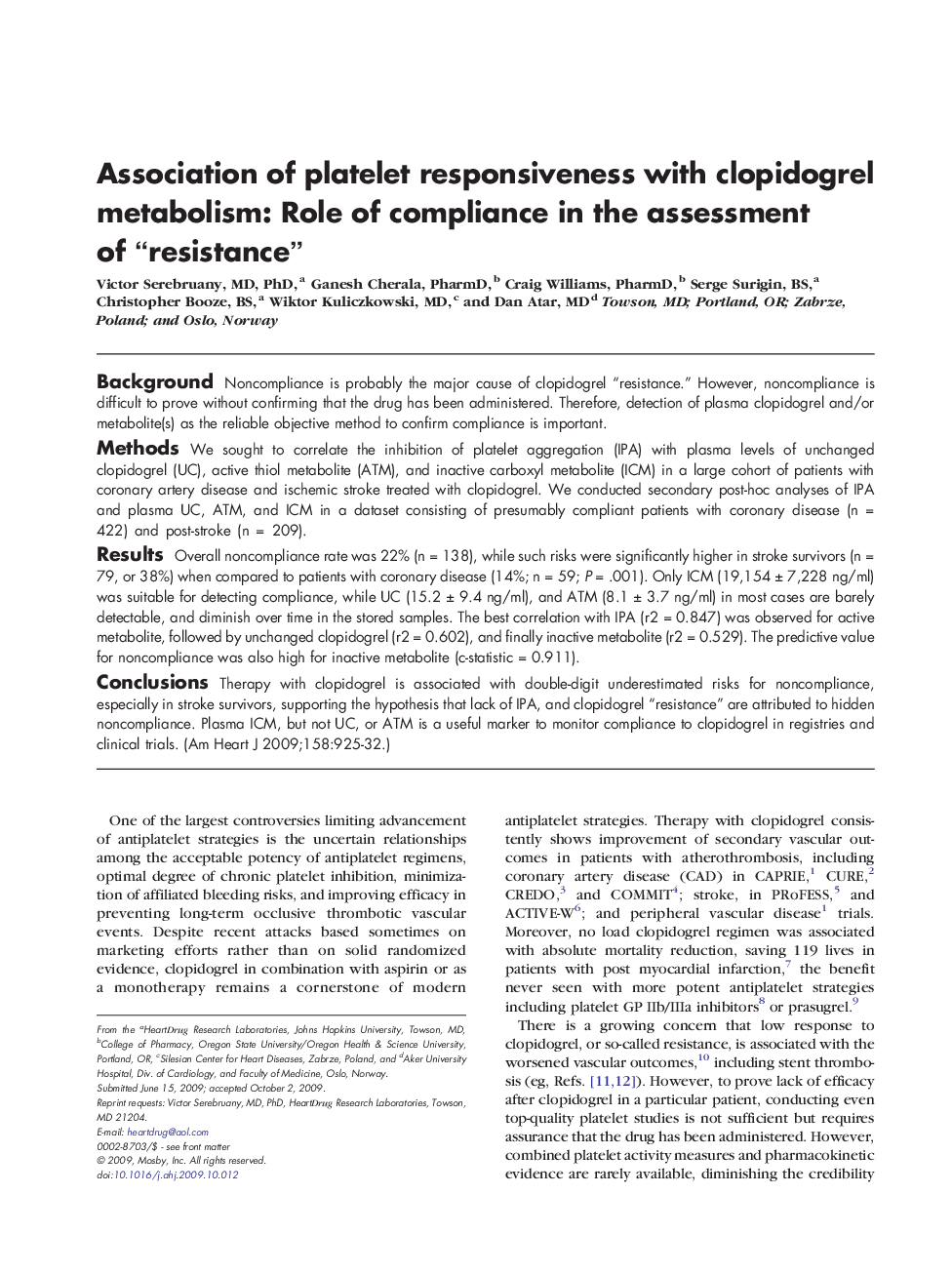| Article ID | Journal | Published Year | Pages | File Type |
|---|---|---|---|---|
| 2851223 | American Heart Journal | 2009 | 8 Pages |
BackgroundNoncompliance is probably the major cause of clopidogrel “resistance.” However, noncompliance is difficult to prove without confirming that the drug has been administered. Therefore, detection of plasma clopidogrel and/or metabolite(s) as the reliable objective method to confirm compliance is important.MethodsWe sought to correlate the inhibition of platelet aggregation (IPA) with plasma levels of unchanged clopidogrel (UC), active thiol metabolite (ATM), and inactive carboxyl metabolite (ICM) in a large cohort of patients with coronary artery disease and ischemic stroke treated with clopidogrel. We conducted secondary post-hoc analyses of IPA and plasma UC, ATM, and ICM in a dataset consisting of presumably compliant patients with coronary disease (n = 422) and post-stroke (n = 209).ResultsOverall noncompliance rate was 22% (n = 138), while such risks were significantly higher in stroke survivors (n = 79, or 38%) when compared to patients with coronary disease (14%; n = 59; P = .001). Only ICM (19,154 ± 7,228 ng/ml) was suitable for detecting compliance, while UC (15.2 ± 9.4 ng/ml), and ATM (8.1 ± 3.7 ng/ml) in most cases are barely detectable, and diminish over time in the stored samples. The best correlation with IPA (r2 = 0.847) was observed for active metabolite, followed by unchanged clopidogrel (r2 = 0.602), and finally inactive metabolite (r2 = 0.529). The predictive value for noncompliance was also high for inactive metabolite (c-statistic = 0.911).ConclusionsTherapy with clopidogrel is associated with double-digit underestimated risks for noncompliance, especially in stroke survivors, supporting the hypothesis that lack of IPA, and clopidogrel “resistance” are attributed to hidden noncompliance. Plasma ICM, but not UC, or ATM is a useful marker to monitor compliance to clopidogrel in registries and clinical trials.
